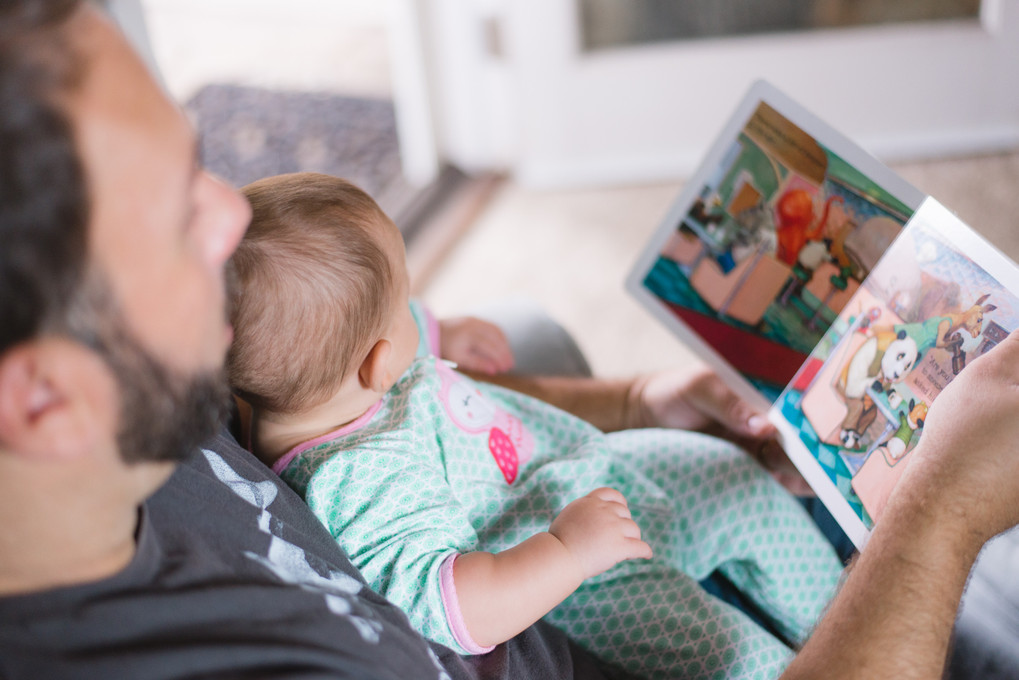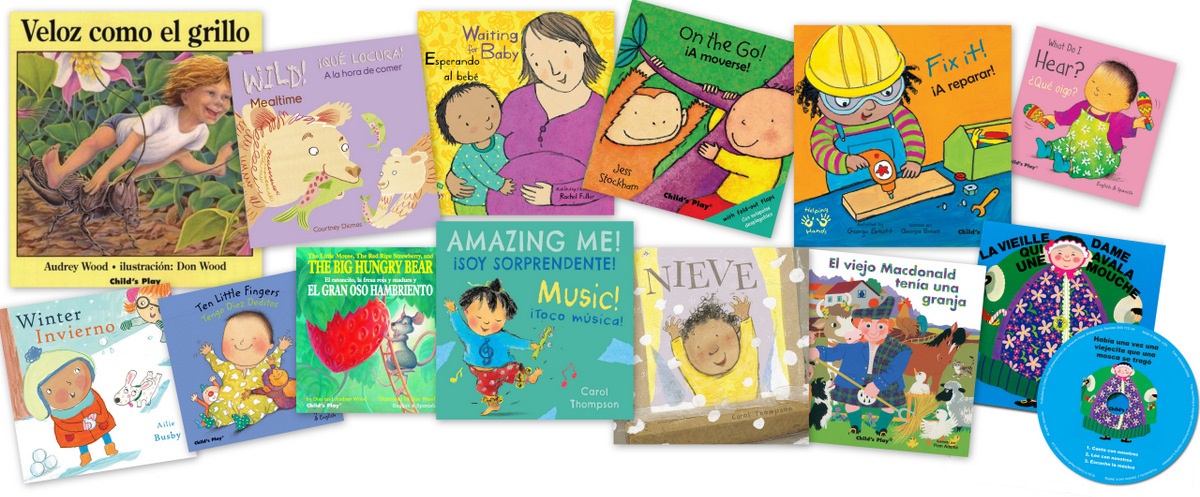
Posted by Megan Habel on Sep 27, 2019
Connecting Families, One (Bilingual) Book at a Time
Child's Play is taking a step towards inclusion with their line of bilingual books.
In recent years, the publishing industry has seen an increasing need for more diverse titles, specifically in the languages provided. More and more children are growing up in households where English isn't the primary language, and want books that reflect that. Publishers are making a push to develop bilingual books and titles offered in Spanish. One publisher that continues to create inspiring bilingual and Spanish titles is Child's Play. We spoke with Joe Gardner, VP of Sales and Marketing at Child's Play, to learn more about their bilingual program.

Take us through the history of Child's Play bilingual program.
Child’s Play has a history of publishing books in multiple languages. The actual legal name of the company is Child’s Play (International), Ltd., because a central idea of the company’s founder was to be a world languages publisher and to be able to communicate with folks from around the globe.
When I first joined Child’s Play, we had offices in 12 countries, and published books in 27 languages. Much of that has changed as English has become the lingua franca, and the demand for children’s books in English has increased.
The growth of the Hispanic population of the United States has been well documented and was well underway in the 1990s when we started thinking about expanding our Spanish language publishing program in the United States. One of the countries where we published was Spain, and that is where our first Spanish books originated. The language we used was Catalan, which of course is a very different Spanish than is spoken here. Very early on, we met Teresa Mlawer, who along with her husband Bill, had started Lectorum, a Spanish language bookstore in NYC. Shortly after we met, they started a catalog which ultimately became the largest supplier of Spanish and bilingual books to schools and libraries in the United States. Teresa became Child’s Play’s translator, which was a very lucky thing for us because there was no one who understood the uniquely Spanish idiom in the US like Teresa.
For many years, Spanish language books were a novelty for Child’s Play. That changed when we became seriously focused on the literacy market in the United States. We’ve gone through an evolution as a publisher, much as the industry has, and what started as a toy/novelty business and became a book store/mass-market business has become an educational/literacy business. The focus on healthy, active learning for young children and families has always been the same—the publishing and marketing channels that are receptive to us are what is different.
At this point in our professional lives, we are thrilled with the turn our fortunes have taken. We feel like we are directly reaching the people we’ve been publishing for all along.
The main reason for beginning a bilingual publishing program was to be able to reach families with young children in underserved communities. This is part of an overall commitment to expand the diversity and inclusivity of our offerings so that children of many different shapes, sizes, colors, and backgrounds can see themselves in the stories we tell. Committing to publishing for the literacy market means making an investment in healthy outcomes—literacy is literally a healthy lifestyle issue, and the hard evidence is growing that children with strong literacy foundations live longer and lead healthier lives.
What benefits have you seen with offering bilingual titles?
Bilingual books become an opportunity to include children and parents from backgrounds where English is not a first language in the child’s school experience. When they read Child’s Play bilingual books, parents and children are able to talk, sing, dance, work on tasks, and play games together. Family literacy is the strongest foundation, and parents are the child’s most important teachers. Bringing books into homes where there are not a lot of books, and introducing these books in ways that are accessible, stimulating and fun is a way to perhaps make real change in the lives of young children and their families.
There are many other extended activities and benefits that bilingual books bring to both native speakers and second language learners, but the essence of it is that bilingual publishing creates inclusivity that would not otherwise exist.
Inclusivity is central to our mission, and bilingual publishing has become an integral and essential part this. We are thrilled to be able to share our efforts with you.
Thanks, Joe, for your wonderful insights into the world of publishing bilingual books! Visit our site to discover more bilingual titles Child's Play offers.
This post was written by Megan Habel, the brand strategist at BookPal. She is currently reading Formation by Ryan Leigh Dostie.





